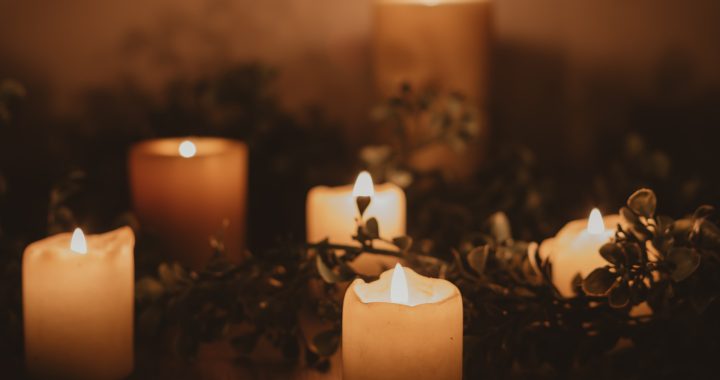Christmas is a time for childhood dreams, a time of magic, and a time of giving. For all Christians, it is a celebration of the birth of the infant baby Jesus.
My childhood Christmas memories in Ireland take me back to the West Kerry village of Ventry ( Ceann Trá) during the late 1950s and early 1960s, a time before the arrival of the electric light in that area of County Kerry.
Ventry is located on the Dingle Peninsula and is in the heart of the Gaeltacht (Irish-speaking) region. The area maintains a rich cultural heritage where traditions are still valued and celebrated.
At that time the village had a small community of mainly elderly people, and I had the freedom to safely ramble about the village, visiting everyone in their homes. Doors always seemed to be open, and without the distraction of radio, television, or social media, visitors were welcome and good conversation was valued.
There was Jerry Slattery, the cobbler, Bill Neill the blacksmith, Maggie Knightly the dressmaker, Bill Rooney, Manus O’ Donnell, the pensions officer, his wife, Mary, and young Manus. There was Nicholas Brown (retired merchant seaman), and his sister Bella Brown (retired air steward, from the flying boat era). There was Mike McDonnell and his wife Breege (retired school teacher).
Further up the village, there was Harry Long and his wife Catherine (with their family) who had a shop and post office. Beside them lived Aunty Annie (Griffin) who had spent years in America. The pub was owned by Morgan Flaherty and his sister Joan. Beside our house lived Mikey and Noreen Curran and beside them lived James and Nora Curran. Eileen Curran would be home from England for Christmas. On the other side of our house was another shop owned by Tim and Brigid Kavanagh, Behind our house, up a short laneway, lived Johnny and Jenny Hick and family. Others such as Din Moriarty and Jim Connor had already passed to their eternal reward. This was the community that celebrated Christmas in Ventry when I was a small child.
Our house was once (1850-1909) a police barracks manned by the RIC ( Royal Irish Constabulary) before Ireland’s independence. Our family room was once the day room for the barracks and our parlour was once the cell. These rooms were added to the original house in 1850 (which was originally a coastguard house built probably in the 1820s), to accommodate the needs of a barracks. The cell room and an extra bedroom were added to the western side of the house. That bedroom was always known as the “men’s room”, where the younger policemen slept. The sergeant, wife, and family had occupied the other bedrooms.
When I was a child the village and surrounding area depended on oil lamps and candles for light. My abiding memory was the overbearing darkness that descended at 5 pm each day, giving us long winter nights. There were no street lights so the village was entirely in darkness, except for the dim lights to be seen behind the window curtains.
In the houses, the paraffin (tilley) lamps were lit at dusk and hung from a hook in the ceiling or placed on the kitchen table. I still recall the smell of these lamps and the dull light they provided. Because our house was once a police barracks, we had piped gas lights in the downstairs living areas. Because of this, we did not need to use tilley lamps. However, for upstairs we had to use candlelight, so that was a bit scarey for us children.
But at Christmas, the entire village and parish became a city of light. The tradition was that a lighted candle was placed in each window of the house on Christmas Eve and Christmas Day. The tradition was to convey to travellers (particularly Joseph and Mary, the holy family) that they were welcome to stay in our homes. On these nights also, we left our doors open, for the same reason. Candles were also lit in all windows on New Year’s Eve and New Year’s Day. Finally on January 6th (the Christian Feast of the Epiphany) to represent the journey of the Magi, three candles were lit and placed in three windows of the house.
January 6th, the last day of Christmas, is also known in Ireland as Nollaig na mBan, or Women’s Christmas. On this day it was the tradition that women would get together and enjoy their own Christmas, leaving their menfolk at home to do the household chores and mind the children.
Ventry Village sits at one end and above the beach, a location that gives a great view of much of the surrounding parish of Ventry. On the nights of Christmas, the blackness of the night sky was replaced with thousands of lights, thereby giving the impression of a city at nighttime. Early in the evening of Christmas Eve, our parents drove us around the district to admire the vast “sea of candlelight”.
In our house, Christmas was a very busy time. The decorations were taken down from the attic. These were made of coloured paper and strung across the ceilings of the rooms in the living area of the house. Another important job was undertaken by my oldest brother, who went to Burnham Wood to find and take home the holly. This was cut into small pieces and placed behind the pictures on the wall. Meanwhile, our mother was preparing all the food for Christmas, and we helped her with her chores.
Candles were the centerpiece of the Christmas decorations. A large candle was placed on the kitchen table and lit at dusk. My father or mother would have bought candles in Dingle for all the house windows. A trip was then made to the nearby beach to get a bucket of sand. This would be placed in small containers around the candles to secure them safely. One container would stand in each window, and we waited with excitement for dusk on Christmas Eve.
The custom was that the youngest person in the family (when age appropriate) would light the first candle. Which would be the first house in the parish to light up? We would beg our father from 3 pm to let us light the candles. Eventually, at about 4 pm we pointed to some other houses that had lit their candles and our father allowed us to light ours. There were eight large windows on the front of our house, each adorned with a lighted candle. A joy to behold!
On Christmas Eve the world fell silent in Ventry. Shops had closed and road traffic had practically ceased. All we could hear was the sound of the waves from the beach below our house. As we looked back towards Mount Eagle there was the magic of hundreds of twinkling stars (or so we imagined) as the splendour of the lighted candles shone forth from every house. All was set for the arrival of baby Jesus. Before we went to bed, the little statue of Jesus was placed in the crib and we sang the hymn, Silent Night (Óiche Chiúin), in honour of Our Saviour.
But we were also excited by the imminent arrival of another visitor, Santa Claus. We were worried that he might not come to our house, as we recalled times over the previous year when our behaviour was less than satisfactory. But our mother assured us that all would be fine and Santa wouldn’t forget us.
We were sent to bed earlier than usual on Christmas Eve, just in case Santa arrived early. As there was no electric light a candle was placed on the upstairs landing and the doors to our rooms were open. I always found that a bit scary. The flickering candle threw shadows onto the walls of my bedroom and I imagined there were monsters or ghouls in the room. The added stress of trying to get to sleep before Santa arrived downstairs made it difficult to fall asleep, but eventually, I did.
Sometimes, I was awoken by a lot of activity downstairs, so I reckoned Santa was in the house. I daren’t open my eyes in case he looked into my room and found me awake. When morning arrived there was great excitement as we went downstairs in a hurry, to see what Santa had brought us. Each of us children excitedly headed to the corner of the room where our presents had been left. There was so much excitement, and we could see the joy in our parents’ eyes too.
Life was simple then and we usually asked Santa for modest presents like books, sweets, a toy gun, and a toy sword, as well as games such as snakes and ladders. There were also some practical presents such as new shoes. We spent the morning playing with Santa’s presents. By midday, we were playing on the village green and meeting other children from the village. We showed each other our new toys, and we played with all of them.
By early afternoon it was time for the traditional Christmas dinner of turkey and ham with Christmas pudding to follow. Our Dad was great for getting presents of turkeys, and I remember one Christmas when we had three turkeys!
The following day was Saint Stephen’s Day and this was the day when the Wren Boys (and girls) took to the roads and streets visiting homes while dancing and playing their accordions. But that is another story.
Christmas is a time for memories and I am glad to share some of mine from Ireland, over sixty years ago.
(Photo by Sixteen Miles Out on Unsplash).

